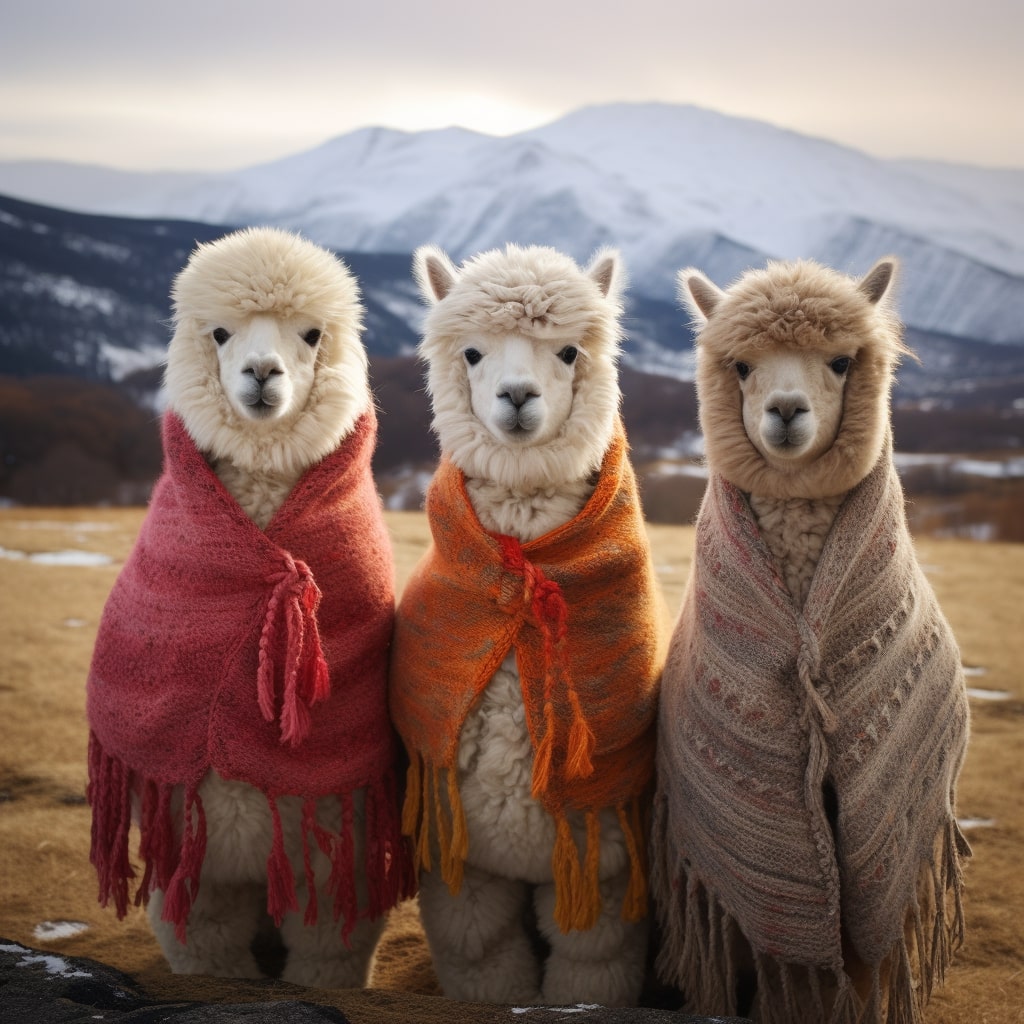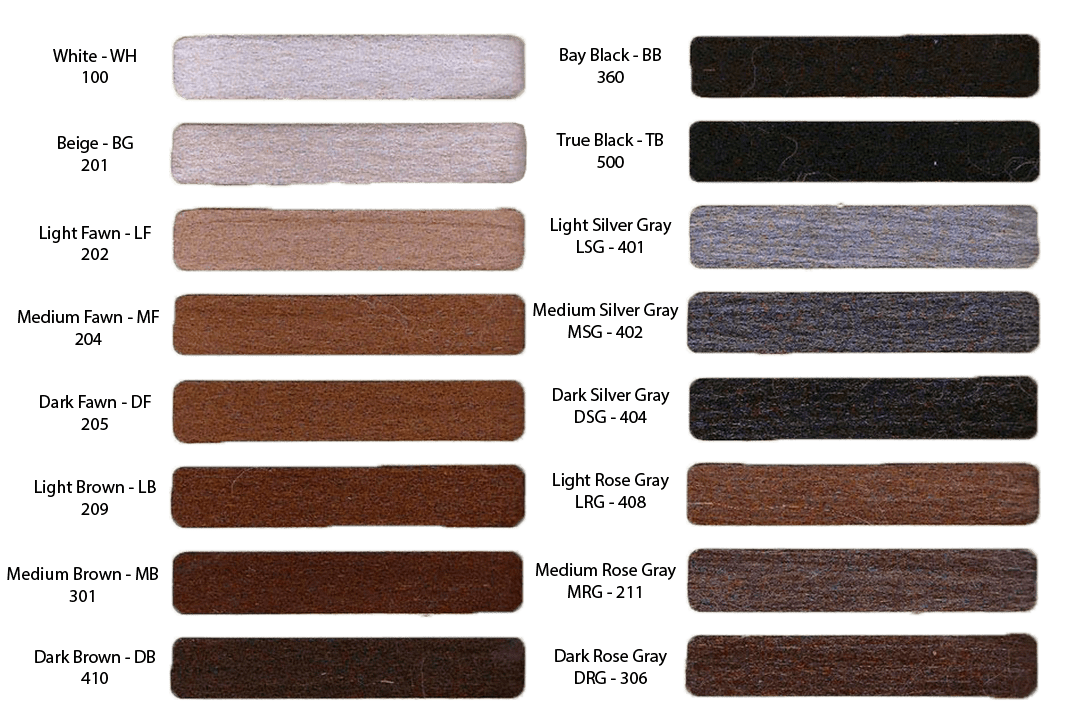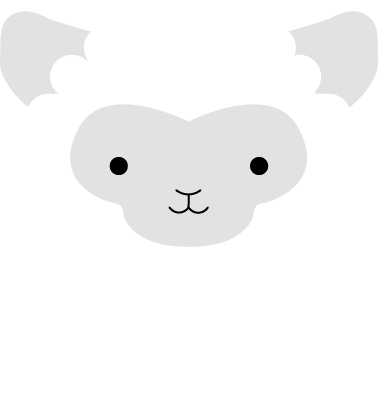Alpaca fiber is highly valued and comes from two breeds of alpaca: Huacaya and Suri. The Huacaya fleece is dense, with crimped fibers that grow perpendicular to the animal’s body, giving it a puffy appearance. In contrast, Suri alpaca fleece is much longer, grows downward along the animal’s body, and the fibers are shinier and silkier than those of the Huacaya. Alpaca fiber has multiple characteristics and is used to create high-quality clothing, which is very easy to care for and maintain.
Properties of alpaca fiber
Alpaca fiber exhibits multiple characteristics that determine its quantity and quality:
- Fineness
- Luster
- Fiber alignment
- Primary fiber
- Crimp
- Hand
- Density
- Fiber length
- Coverage
Alpaca fiber has several differences and peculiarities compared to fibers from other animals like camels, merino, llama, and vicuña, making it one of the most appreciated.

Fiber Size (Fineness)
The fineness or size of the fiber is a fundamental characteristic that determines the quality of the fleece. A finer fiber is very soft and therefore also more expensive than a less fine fiber. Fineness is measured by the average fiber diameter or AFD, measured in microns, and tests are conducted in a laboratory.
The fineness of the fleece is influenced by multiple factors such as age, usually with the diameter of the fiber increasing over the years, reducing its quality. Other factors determining the fineness level of the fleece include nutrition, pregnancies, and fluctuations in testosterone levels.
In males, the fiber usually has a larger diameter compared to females and castrated males. The fiber for assessing fineness is generally taken from one side at the center of the alpaca.
Alignment of Fibers
Aligned fibers make the fleece heavier and denser. Fibers are aligned when the skin follicles are also aligned and when the fibers themselves are well grouped together and aligned. The number of follicles and their alignment is determined by the alpaca’s genetics, indeed animals selected with a high genetic profile ensure a greater quantity of fiber and of higher quality.
Luster
A shiny fiber means bright and very appreciated garments. A healthy and balanced diet gives alpaca fiber shine even after processing, but genetics is also an important albeit secondary factor.
Medullary fiber
Medullary fibers are the larger hairs and therefore of lower quality, located in the areas of the neck, legs, and abdomen. The quantity of these hairs decreases by adopting breeding techniques that are based on a correct and healthy diet for alpacas. Genetics also plays a crucial role in this context, as genetically selected alpacas have fewer quantities of medullary fiber compared to alpacas with lesser genetics.
The medullary fiber has a diameter around 30 microns or more, and the percentage of medullary fiber present on a fleece measures the degree of roughness of the same.
Length
The length of the alpaca fiber represents the length reached by the fiber over a certain period. Fiber length is another determining characteristic to establish the quantity and quality of the fiber. Genetics and nutrition play a crucial role as a well-nourished alpaca with a good genetic profile will have longer fiber and more uniform growth.
Crimp
Crimp is the quantity and quality of the folds present on the alpaca’s fiber and measures the elasticity of the fleece. The greater the crimp of the fiber, the greater will be the elasticity of the finished product, and therefore its ability to return to its original shape. The main characteristics of crimp are the quantity and height of these folds per inch of fiber; the more frequent and higher the folds, the greater the elastic capabilities of the fiber.
Crimp is a significant characteristic of sheep’s wool, as garments made from sheep’s wool are very elastic. Sheep’s wool contains lanolin, making it less soft to the touch, preferring alpaca fiber under equal conditions. In Huacaya alpacas, crimp is a very important characteristic, while in Suri it is considered a defect.
Coverage
Coverage is the percentage of alpaca skin covered by the fleece. The fiber with better quality is located on the areas of the back, chest, shoulders, flank, withers, while areas like the legs, abdomen, and neck present fiber with lower quality.
Colors of alpaca fiber
The colors of alpaca wool are recognized in 22 natural shades:
- White – WH – 100;
- Beige- BG – 201;
- Light Fawn – LF – 202;
- Medium Fawn – MF – 204;
- Dark Fawn – DF – 205;
- Light Brown – LB – 209;
- Medium Rose Grey – MRG – 201;
- Medium Brown – MB – 301;
- Dark Rose Grey – DRG – 306;
- Bay Black – BB – 360;
- Light Silver Grey;Medium Silver Grey – MSG – 402;
- Dark Silver Grey – DSG – 404;
- Light Rose Grey – LRG – 408;
- Dark Brown – DB – 410;
- True Black – TB – 500.

There are also other types of coloring, but artificial dyes are used, or during the spinning phase of the garment, different types of fiber with different colors are mixed.
Defects in alpaca fiber
To obtain high-quality alpaca fiber, it must be free from defects. Depending on the breed type, the fleece may present different defects. A fiber not of quality may also be a sign that the alpaca may be affected by diseases or nutritional problems.
Defects in Suri alpaca fiber
The fiber of the Suri alpaca is shiny and silk-like, soft to the touch, and uniform, hanging perpendicular to the ground. The main defects that can be found in the fiber of Suri alpaca are:
- Excessive crimp;
- Low density;
- Short length;
- Roughness;
- Opacity;
- Lack of luster;
- Poor coverage;
- Too flat fiber.
Defects in Huacaya alpaca Fiber
The fleece of the Huacaya alpaca has fibers that grow forming a right angle with the body. An important characteristic of the Huacaya alpaca’s fiber is the waviness called crimp or “Crimp”. The main defects that can be found in the fiber of the Huacaya alpaca are:
- Poor crimp;
- Low density;
- Short length;
- Roughness;
- Opacity;
- Poor coverage;
- Fiber that breaks.
